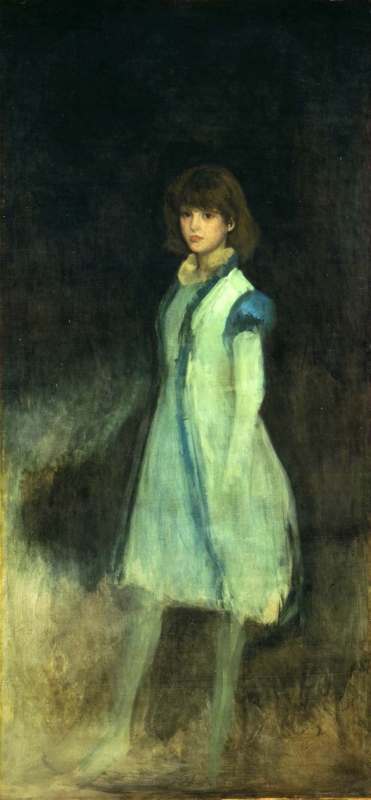The Blue Girl: Portrait of Connie Gilchrist probably dates from 1879, possibly after the completion of another portrait of Connie, Harmony in Yellow and Gold: The Gold Girl - Connie Gilchrist [YMSM 190], which was exhibited in May 1879. Connie's face is similar in both paintings.
The Blue Girl: Portrait of Connie Gilchrist was probably the painting mentioned as 'blue girl' by Charles Augustus Howell (1840?-1890) in August 1879 and as 'the Blue Girl (Connie)' by Whistler in March of the following year. 1
Last updated: 21st October 2020 by Margaret







